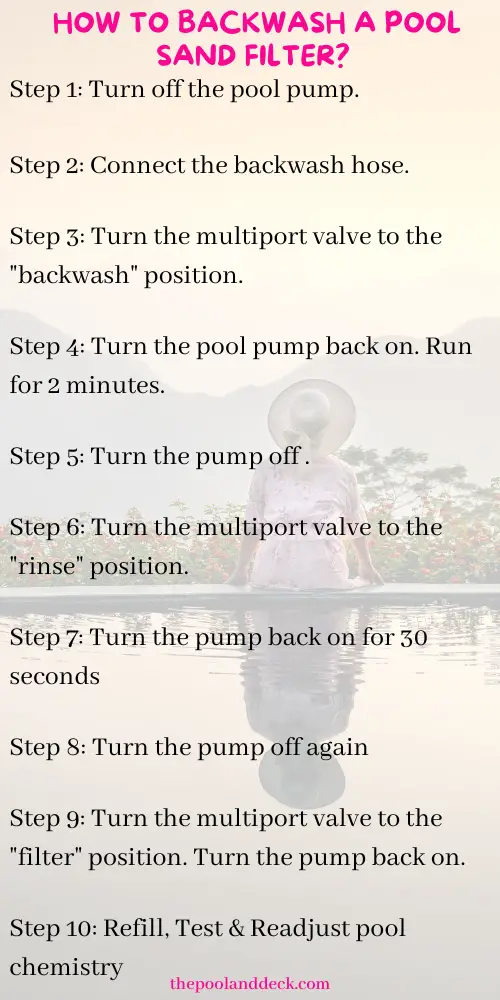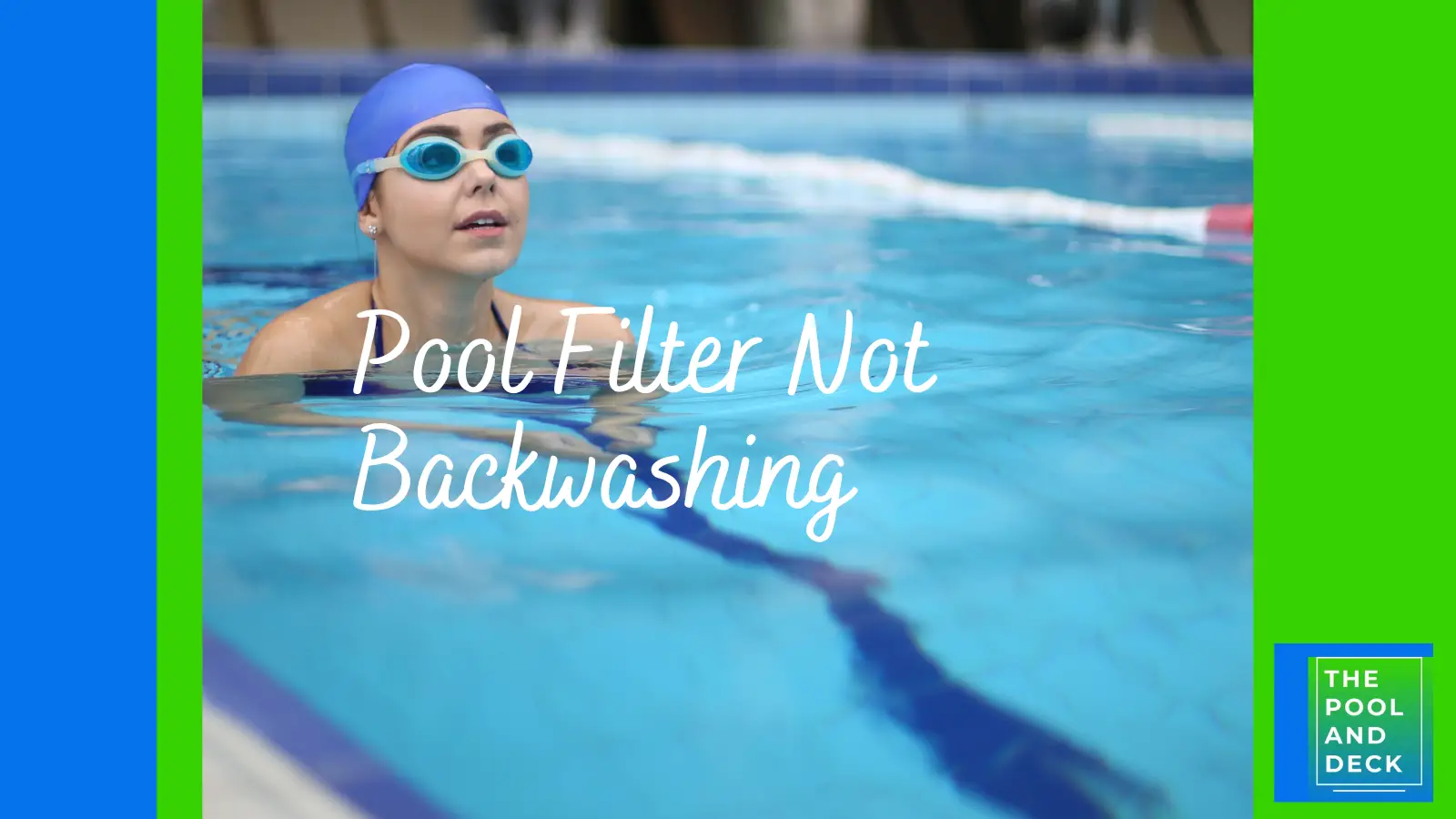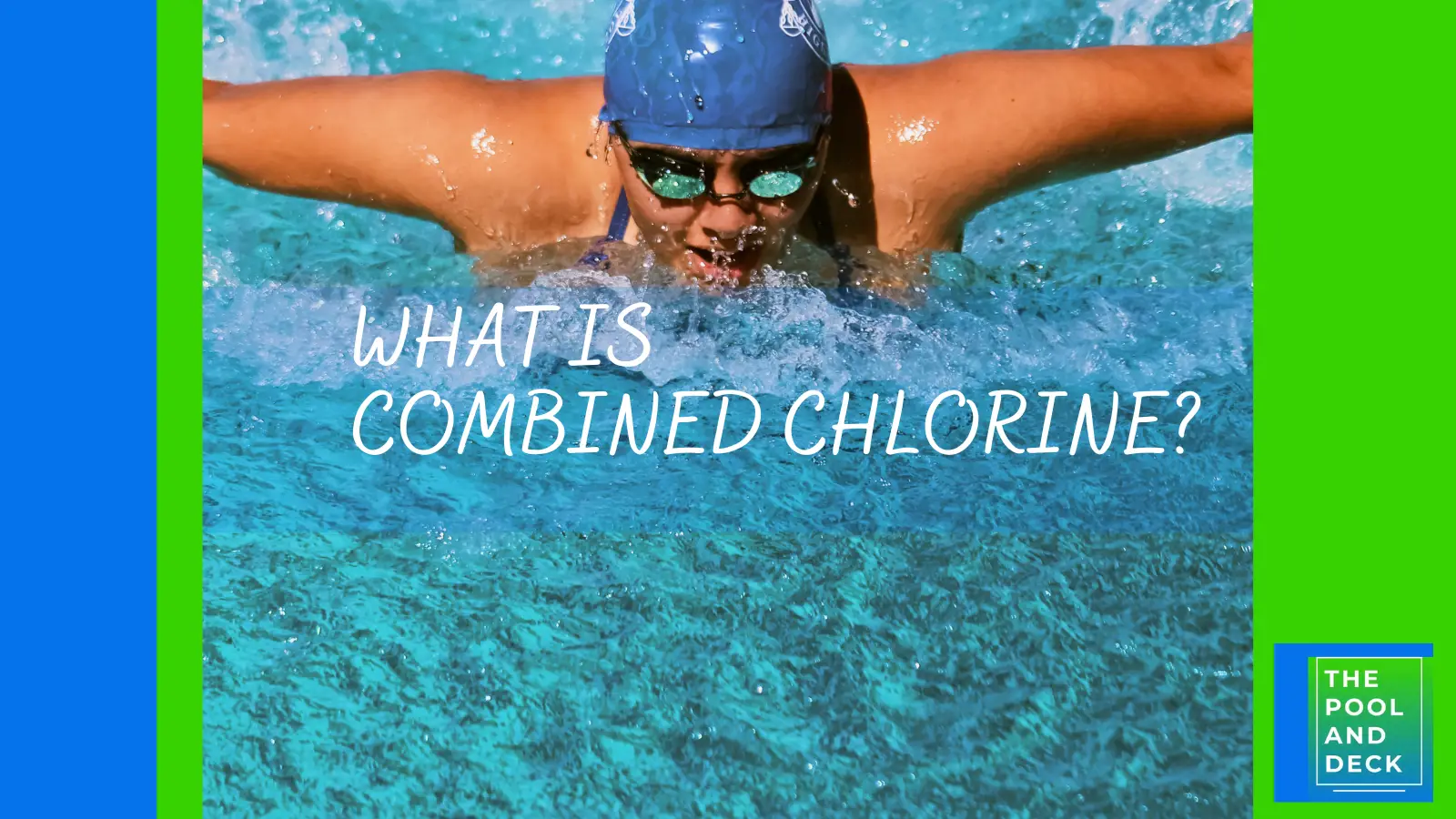How to Backwash a Pool Sand Filter? 10 Step Easy Guide!
How to Backwash a Pool Sand Filter?
The clarity and quality of pool water depends mainly on two factors; Pool Chemistry and Filtration Efficiency. How to backwash a pool sand filter correctly has an important role in improving the efficiency of pool filtration system.
The filtration efficiency, on a day to day basis, is heavily dependent on backwashing. Simple as it may seem, many new pool owners get it wrong! So, how to backwash a pool sand filter, the right way like a pro?
The answer lies in meticulously following a step-by-step process. In this post I give you a summarized checklist as well as a detailed guide, that walks you through the process of backwashing with easy to understand instructions.
Here is the checklist that you can print or save for ready reference in the future.

Before I get to the step by step guide on how to backwash a pool sand filter, you might want to get some basic knowledge about a pool sand filter and the importance of backwashing it on a regular basis.
What Is a Pool Sand Filter?
A pool sand filter is a key component of the pool filtration system. It consists of a tank that is partially filled with sand that acts as a filter media. The pool pump draws the dirty pool water and pushes it through the sand filter.
A central standpipe with radial laterals at the bottom directs the water flow within the sand filter tank. This is how a cross-section looks:
The filter traps debris and contaminants while clean water is returned to the pool. A multiport valve (MPV), typically with 7 settings, allows you to direct the flow of water through the filter in the desired manner.
Why is Backwashing a Pool Sand Filter Important?
The job of a pool sand filter is to trap debris, contaminants and algae from your pool. The pool gets cleaned up but the sand in the sand filter accumulates the dirt & debris. Ultimately the filter media reaches its filtration capacity and begins to clog up.
A point is reached when the flow rate drops, the pressure gauge reading climbs up and the pool sand filter is no longer as effective as it used to be.
The solution is to backwash and rinse the filter once the filter pressure reading is around 10 psi higher than the normal psi reading. You may expect to do this 2 – 3 times during the pool season. The frequency may have to be increased to once a week when the bather load is very high.
If a pool sand filter is not backwashed regularly, it will become clogged, stop filtering and result in dirty and cloudy pool water.
When Should You Backwash?
Backwashing helps clean the pool sand filter and is therefore a good pool maintenance practice. However, it does not mean that you should backwash even when it is not required.
The process of backwashing involves a loss of pool water (and costly pool chemicals with it!). You should, therefore, not set a timeline for backwashing, such as every fortnight. Backwash when it is really needed!
So how do I know when backwashing is really needed? The pressure gauge reading will tell you.
Backwash your pool sand filter when the pressure gauge on the filter reads 8-10 psi higher than the normal pressure reading.
This is an indication that the pool sand filter is beginning to clog up and the pool pump is having trouble pushing water through it.
10 Step Guide on “How to Backwash a Pool Sand Filter?”

1. Turn Off the Pool Pump
You need to turn off the pool pump to prevent any water from flowing into the filter during the backwash process. Remove and clean the skimmer basket and the pump strainer basket.
2. Connect the Backwash Hose
Connect one end of the backwash hose to the backwash port on the multiport valve and the other end to a drain or an area in your yard where the wastewater can be discharged.
3. Set the Multiport Valve on Backwash
Move the lever on the Multiport Valve (MPV) such that it aligns with the Backwash setting.
4. Turn On the Pool Pump
Turn the pool pump back on and run it for around 2 minutes. Run it a bit longer if the water flowing out of the backwash hose is not yet running clear.
This is when the actual backwashing takes place. The trapped debris is flushed out of the filter and into the drain or discharge area.
5. Turn Off the Pool Pump
The pool pump must be turned off every time you intend to change multiport valve (MPV) setting.
6. Set the Multiport Valve on Rinse
After backwashing, it’s essential to rinse the filter to remove any remaining debris or dirty water.
Move the lever on the Multiport Valve (MPV) such that it aligns with the Rinse setting.
7. Turn On the Pool Pump
Run the pump for another 30 seconds or so to rinse out the filter.
8. Turn Off the Pool Pump
As mentioned earlier, the pool pump must be turned off every time you intend to change the multiport valve (MPV) setting.
9. Set the Multiport Valve on Filter
Your pool sand filter has been backwashed successfully and you are ready for the final step.
10. Refill, Test & Readjust Pool Chemistry
Backwashing reduces the pool water as some of it is drained out. Pool chemicals are also reduced accordingly. In essence, the pool has to be rebalanced.
Refill the pool with fresh water to bring it to the same level as that before the backwash. Test the pool chemistry. Then readjust the different levels so that they are all within the recommended range.
Thank you very much for reading the post. I do hope you found it informative and helpful.






